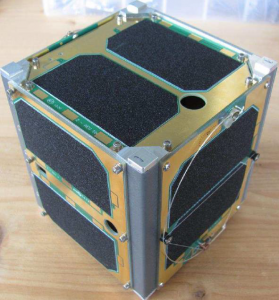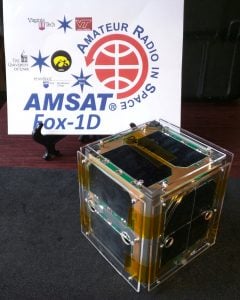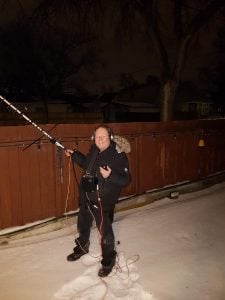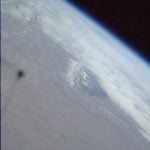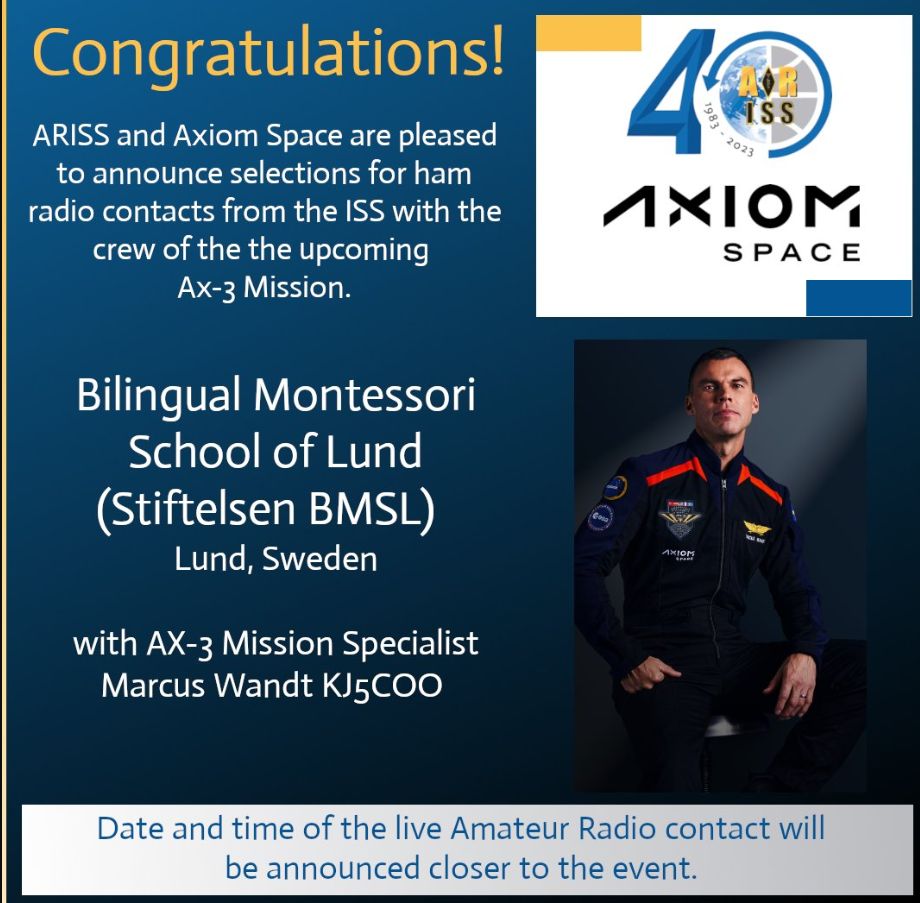Re-published from ANS-035
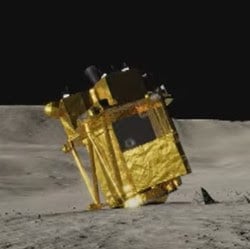
A rendering of the Smart Lander for Investigating Moon (SLIM) on the lunar surface. [Japan Aerospace Exploration Agency, image]
The Japan Aerospace Exploration Agency (JAXA) successfully landed their Smart Lander for Investigating Moon (SLIM) on January 19, 2024. Just before touchdown, SLIM released two small lunar surface probes, LEV-1 and LEV-2.
LEV-2 collects data while moving on the lunar surface, and LEV-1 receives the data.
The JAXA Ham Radio Club (JHRC), JQ1ZVI, secured amateur radio license JS1YMG for LEV-1, which has been transmitting Morse code on 437.41 MHz since January 19. The probe uses a 1 W UHF antenna with circular polarization and is transmitting “matters related to amateur business.”
Radio amateurs have been busy analyzing JS1YMG’s signal, with Daniel Estévez’s, EA4GPZ, blog introducing the method and extraction results for demodulating Morse code from the signal, as well as extracting the code string.
It’s unclear how long signals will be heard. JAXA has said that SLIM was not designed to survive a lunar night, which lasts about 14 days, and is due to return in a few days.
SLIM was launched on September 6, 2023, and landed on January 19, 2024, with the mission of analyzing the composition of rocks to aid research about the origin of the moon. SLIM’s landing made Japan the fifth country to achieve a soft touchdown on the moon. The landing was achieved with exceptional precision — within 180 feet of its targeted touchdown location.
[ANS thanks ARRL News for the above information]
Lunar Excursion Vehicle (LEV-1) Amateur Telemetry Received
The Japan Aerospace Exploration Agency (JAXA) confirmed on January 20, 2024, that the Lunar Excursion Vehicle (LEV-1), a small robot deployed from the Smart Lander for Investigating Moon (SLIM), successfully conducted activities on the lunar surface. The telemetry data were sent directly from the small robot.
According to telemetry data, after deployment from SLIM, LEV-1 executed planned leaping movements and direct communication with ground stations, including inter-robot test radio wave data transmission from the Transformable Lunar Robot (LEV-2, nicknamed “SORA-Q”). On the other hand, image acquisition on the lunar surface has not been confirmed as of now.
Currently, LEV-1 has completed its planned operational period on the lunar surface, depleted its designated power, and is in a standby state on the lunar surface. While the capability to resume activity exists contingent on solar power generation from changes in the direction of the sun, efforts will be maintained to continue receiving signals from LEV-1.
Both LEV-1 and LEV-2 have become Japan’s first lunar exploration robots. Additionally, the small LEV-1 with a mass of 2.1 kg (including a 90g communication device), achieved successful direct communication with Earth from the moon. This is considered as the world’s smallest and lightest case of direct data transmission from approximately 380,000 kilometers away.
Furthermore, the accomplishment of LEV-1’s leaping movements on the lunar surface, inter-robot communication between LEV-1 and LEV-2, and fully autonomous operations represent groundbreaking achievement. It would be regarded as a valuable technology demonstration for future lunar explorations, and the acquired knowledge and experience will be applied in upcoming missions.
Moreover, the transmission of UHF band radio waves from LEV-1 as part of outreach efforts has encouraged participation from amateur radio operators globally, and we have been receiving reports of successful signal receptions. This initiative provided an opportunity for the public to be directly engaged in lunar exploration missions. We would like to extend our sincere gratitude to everyone involved in the LEV-1 mission.
LEV-1 has an International Amateur Radio Union (IARU) coordinated downlink frequency of 437.410 MHz. A detailed report on receiving and decoding LEV-1 telemetry has been prepared by Daniel Estevez, EA4GPZ/M0HXM. It can be found at https://destevez.net/2024/01/trying-to-decode-lev-1/ An earlier summary of LEV-1 design and specifications is at https://robotics.isas.jaxa.jp/lev/LEV_HAM_Club.html.
[ANS thanks the Japan Aerospace Exploration Agency (JAXA) and Daniel Estevez, EA4GPZ/M0HXM, for the above information]

